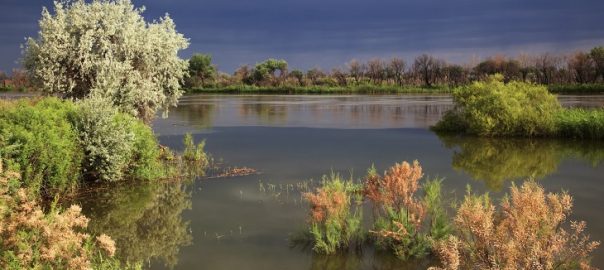The ISW has been active in rural Uzbekistan for over 15 years, improving residents' quality of life through infrastructure and education.
Of a population of nearly 30 million people, 19 million Uzbekistan residents (64%) live in rural areas. Only 26% have access to treated running water, 55% do not have access to water at all or can only get water from an unimproved source.
In many villages, the inhabitants have no other choice than to consume unsafe water from irrigation channels or else to buy water of dubious quality carried in tank trucks. Neither of these sources provides a reliable quantity of water. Furthermore, the irrigation channels are not always full and people are obliged, at certain periods of the year to buy water from water sellers. They may have to pay up to 15 USD per cubic metre.
Programme objectives
To contribute to improving the living and health conditions in the target villages of the Ferghana valley and the province of Syrdarya by strengthening decentralised water supply services and improving hygiene and sanitation practices. The programme also aims to integrate the new model of decentralised services into the national agenda.
Specific Objective 1:
Decentralised water management systems exist in the three provinces of the Ferghana valley. They are operated in a sustainable manner by local organisations focusing on water supply and are supported by an umbrella organisation and local public and private institutions.
Specific Objective 2:
The community management model is implemented successfully in ten villages and put to scale in the Syrdarya province. It provides water supply and sanitation services to around 70% of the population and is reproduced nationally by the competent authorities.
With the construction of pilot water supply systems, we wish to demonstrate that it is possible to meet people’s water needs, improve the public toilet situation and establish effective and efficient management systems within the community. A full cost-covering tariff is calculated to ensure the sustainable management of the system over time and to enable it to be expanded.
Expected results:
For Specific Objective 1:
- Water systems in four new villages are rehabilitated in Namangan province. The project’s geographical scope is widened to cover three provinces in the Ferghana valley.
- An umbrella organisation is created for the Ferghana valley and operates effectively.
- Drinking Water Organisations (DWO) have access to technical support and organisational know-how thanks to the umbrella organisation.
For Specific Objective 2:
- Ten new water supply systems are built and the associated DWOs are created.
- The villages serve as a training platform. The capacities of local, district and provincial authority representatives, of self-governing body representatives, engineers and community outreach workers are strengthened.
- Guidelines and recommendations for modifying the regulatory framework are adopted and applied by Uzbekistan authorities.
- Educational tools on good hygiene practices are finalised and submitted to the relevant ministries to be used in appropriate programmes.
- The idea of paying for water infrastructure is accepted and fee systems are in place for access to water in rural areas.
Achievements
Sustainable access to water thanks to effective local governance
At the end of 2015, more than 110,000 people in 26 villages had sustainable access to drinking water. 24 DWOs were officially registered and now manage these water systems. Their staff have been trained on the technical, managerial and financial aspects to be able to independently run and maintain their system. The first water systems built have been running successfully for more than 10 years.
An approach that integrates health issues
Access to water is essential, but alone is not sufficient to significantly improve the health of rural populations. We organise hygiene awareness-raising campaigns alongside actions to provide access to water. Thanks to these campaigns, the incidence of water-borne diseases has dropped noticeably and sustainably in the villages targeted by the project. Regional and national campaigns have been organised to reach the entire population and increase our impact. More than 3,500 employees of the ministries of health and education have been trained in water-related behaviour.
A full cost-recovery approach
One of the main characteristics of the DWO is the instigation of a water fee in agreement with the populations of each village. This fee covers not only the water system operation costs (power for the pump, payment of maintenance technicians, maintenance costs etc.) but also depreciation. In other words, the initial investment cost is included in the fee and will be amortized in 5, 8 or 25 years depending on the type of infrastructure.
An affordable fee
The fee set for each village with ISW’s support is 40 cents per cubic metre, that is to say more than 35 times cheaper than the cost from a tank truck. At this rate, the system is covering its costs if 85% of the population pays, leaving leeway to supply the poorest section of the population who are unable to pay for water.
High fee collection rates
The experience of the past 15 years demonstrates that following a transition period, the rate of fee collection reaches between 90 and 95% and remains at this level as long as the people are still receiving water services. The fee is freely established by the village inhabitants and collected by the DWO. It is also fixed in accordance with the national anti-monopoly agencies.
An affordable investment cost
At a cost of around 60USD per person, the investment required remains affordable. The model proposed includes household connections and is suitable for villages of between 2,000 and 10,000 inhabitants. It also suits systems where several villages depend on a single water source. It works for villages using underground or surface water.
Next steps
In 2016, we will support system extensions by the local inhabitants to reach 30,000 people.
A training programme on behaviour change targeting students in the 10,000 schools of Uzbekistan is currently underway with nurses and teachers from across the country.
Partners







